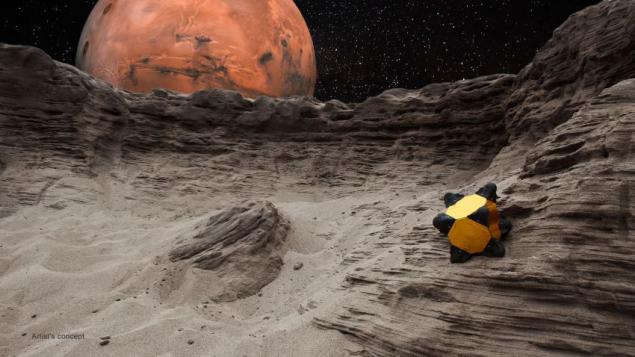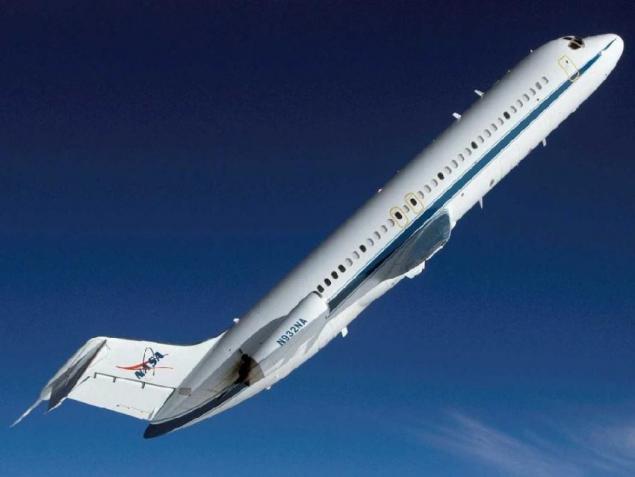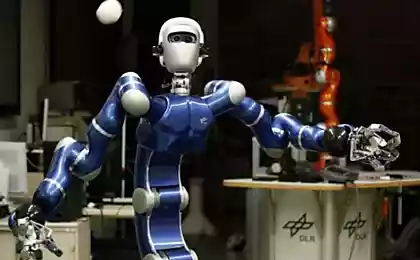780
NASA released a video test inertial robot hedgehog to study comets and asteroids

The planet such as Mars or the moon seems pretty well to explore the moon with the help of major devices that roll on the surface, exploring different places. But what if you want to explore the object like a comet or asteroid? The mission of planting a stationary mini-laboratory on the comet Churyumov-Gerasimenko has shown that this system has some drawbacks, the main of which is the inability to move.
Exit? Inertia robot , which can easily move over uneven surfaces in microgravity. Engineers NASA called a robot «hedgehog" because of the distinctive appearance. In addition, the system can roll on the surface of a comet, like rolls off the hill hedgehog curled up into a ball.
NASA engineers have produced two prototypes of robots that have been tested in microgravity aboard the aircraft C-9. Robots showed good agility, so that the researchers have seen the possibility of using such systems to celestial bodies. At the same maneuvers were performed on different types of surfaces - sand and rock, ice and regolith, soft or elastic surface. To change the position in space in such devices are used flywheels. The planned method of moving the probe on the asteroid's surface - not the most accurate way to travel, but quite effective in such circumstances. Robot with the same principle of operation as early as 2013 demonstrated scientists from Zurich.

Scientists have for the first time were able to try out the "hedgehogs" in the work, and now the project will be implemented until the moment of creating a universal robot that can actually be used as a research station. Incidentally, one of the robots performed even interesting maneuver "tornado", during which he started to rotate at high speed, achieving the separation from the surface. This maneuver can be very useful in contact with, for example, in a sand trap or other similar situations.

In addition, the outer portion of the cube would have no moving parts and the energy consumed is very little. To ensure the inertial energy of the cube will use solar panels placed on the body. In addition, such a probe can be built scientific instruments that will study the object on various parameters. It is planned that similar probes, devices will be simple and not very expensive. The asteroid will deliver their mothership that throws a group of cubes to achieve the objective. Teams for the cubes will be transmitted via a ship.
The cost of creating a "hedgehog" is much lower than the cost of creating, for example, the rover. Who is on the development stage of «Phase II», standard NASA. The development is within the NASA Innovative Advanced Concepts (NIAC) Program. The development taking uchastikov Stanford University, MIT, JPL, Caltech.
Source: geektimes.ru/post/261928/























